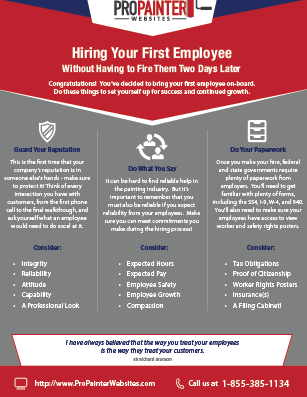Figure Out How Seasonal Aspects Affect Business External Paint Success And Find The Very Best Times To Make Sure Enduring Outcomes For Your Job
Figure Out How Seasonal Aspects Affect Business External Paint Success And Find The Very Best Times To Make Sure Enduring Outcomes For Your Job
Blog Article
Content Produce By-Regan Skafte
When you're planning an industrial outside paint task, seasonal variables can make or damage your results. You'll wish to think about how temperature and moisture influence paint application and drying times. Choosing the ideal period can ensure your paint adheres correctly and lasts much longer. Yet which periods are genuinely the best for this kind of work? Let's explore the key elements that can affect your project's success.
The Effect of Temperature Level on Paint Application
When you're intending an industrial exterior paint job, the temperature level can substantially influence how well the paint adheres and dries out.
Ideally, you wish to paint when temperatures vary between 50 ° F and 85 ° F. If it's as well cold, the paint might not treat properly, leading to problems like peeling off or fracturing.
On the other side, if it's also warm, the paint can dry also swiftly, avoiding correct bond and causing an irregular coating.
You must likewise consider the moment of day; early morning or late afternoon uses cooler temperatures, which can be more desirable.
Constantly inspect the producer's recommendations for the details paint you're utilizing, as they usually give assistance on the suitable temperature array for optimal outcomes.
Moisture and Its Impact on Drying Times
Temperature isn't the only ecological element that affects your commercial external painting task; moisture plays a considerable duty as well. High moisture degrees can decrease drying times dramatically, affecting the total high quality of your paint job.
When the air is saturated with dampness, the paint takes longer to cure, which can bring about concerns like poor bond and a greater threat of mold growth. If you're painting on a particularly damp day, be prepared for prolonged wait times in between layers.
It's vital to keep an eye on neighborhood weather and plan appropriately. Preferably, go for moisture levels in between 40% and 70% for optimal drying.
Maintaining these consider mind ensures your job remains on track and delivers an enduring surface.
Best Seasons for Commercial Outside Painting Projects
What's the very best time of year for your business outside paint jobs?
Springtime and early autumn are typically your best choices. Throughout these periods, temperature levels are moderate, and humidity degrees are usually lower, producing ideal problems for paint application and drying.
Avoid summer's intense heat, which can cause paint to dry also swiftly, bring about poor bond and finish. Likewise, winter's chilly temperature levels can prevent appropriate drying and treating, running the risk of the long life of your paint work.
Go for days with temperature levels in between 50 ° F and 85 ° F for ideal outcomes. Remember to examine the local weather forecast for rainfall, as wet conditions can wreck your job.
Planning around these variables guarantees your paint task runs smoothly and lasts much longer.
Conclusion
In conclusion, preparing your commercial outside paint tasks around seasonal factors to consider can make a considerable difference in the result. By scheduling job during the ideal temperatures and humidity levels, you'll make certain much better attachment and drying times. Keep in click the up coming web page to keep an eye on neighborhood weather forecasts and choose the right time of year-- springtime and very early fall are your best options. Taking these steps will certainly aid you accomplish a durable and professional coating that lasts.
